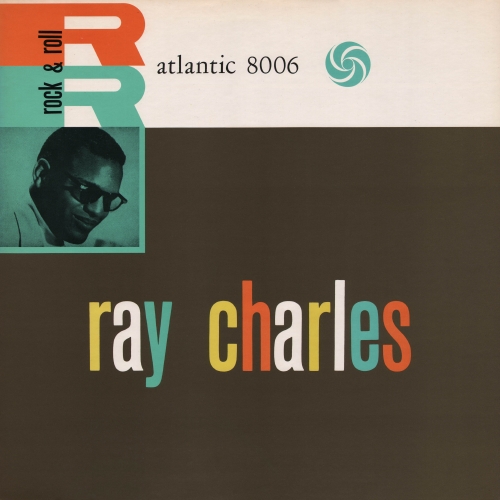

Ray Charles
Studio album by Ray Charles
Released 1957
Recorded May 17, 1953 - November 27, 1956
Genre R&B
Length 41:35
Label Atlantic/Warner-Pioneer
Producers Ahmet Ertegun, Jerry Wexler
Ray Charles is Ray Charles' 1957 debut album for Atlantic Records. It was re-released as Hallelujah I Love Her So in 1962. Many of the tracks had been hit singles for Ray Charles in the preceding years, notably "Mess Around" in 1953, "A Fool for You" and "I Got A Woman" in 1955, "Drown In My Own Tears", "Lonely Avenue" and "Hallelujah I Love Her So" in 1956.
Professional Ratings:
allmusic 4.5/5 stars
Review by Bruce Eder of allmusic:
One of the first handful of LPs issued by Atlantic, Ray Charles (later retitled Hallelujah I Love Her So) is a bona fide classic of its genre. Weighted about three to one in favor of Charles' own compositions, its raison d'etre was the hits "Hallelujah I Love Her So" and the pounding, soaring "Ain't That Love," which opens the LP. As with other Atlantic albums of the period, its content was determined more by Charles' recent singles than by a real plan for the LP, but even within those limitations it's an amazingly subtle record. Charles does just as well with his interpretations of others' work, most notably the ominous, gospel-focused rendition of "Sinner's Prayer" (which offers a virtuoso piano performance, and comes courtesy of the pen of Charles' former mentor Lowell Fulson) and Henry Glover's wrenching ballad "Drown in My Own Tears," which is topped out on each verse by a gorgeous chorus. "Funny (But I Still Love You)" offers a guitar break played in such an understated fashion that it almost doesn't seem so much a part of R&B as it was usually being offered in 1957 as it does a part of Charles' early career output. The second side of the LP is even better, opening with the title track, a number that is almost too ubiquitous in its various cover versions -- the original has a mix of urgency and playfulness that's absolutely bracing, and the album carries this mood forward with "Mess Around," an Ahmet Ertegun-authored piano- and sax-driven romp with Charles at his most ebullient as a singer. "This Little Girl of Mine" offers him in a surprisingly light, almost acrobatic vocal mode, while "Greenbacks" is a knowing, clever cautionary narrative that is almost a throwback to 1940s-style R&B. "Don't You Know" is as salacious a piece of R&B as one was likely to hear in 1957, and "I Got a Woman" closes the record out on a pounding, driving note. The original album suffered from deficient sound and most reissues left a lot to be desired, but in 2003 WEA International reissued it (as Hallelujah I Love Her So) in a 24-bit remastered version in a gatefold format that is a treat to the ear and runs circles around prior reissues.
Review by Meatplow on sputnik music:
The first Ray Charles full length album, a self titled release later retitled Hallelujah, I Love Her So, was released in 1957 to a public largely oblivious that the foundations of a new kind of music named soul were being laid. Though lesser known contemporaries such as Solomon Burke helped to further develop it into a distinct niche, it is Ray Charles early Atlantic singles which are often claimed to have first playfully bridged influences ranging from rhythm & blues, country, gospel and jazz into something entirely fresh and new. Hallelujah, I Love Her So is a compilation of these early singles, and is a great little album.
Full of upbeat jazz flavoured numbers and downtempo ballads alike, each song present is written around a strong lyrical hook with Ray's distinctive voice carrying the show. Opener Ain't That Love is just pure fun, as is the title track, This Little Girl of Mine and Tell The Truth, each track peppered with jaunty piano chords, horn stabs and trumpets which go a long way to creating a spirited, uplifting atmosphere. The true strengths of Hallelujah, I Love Her So lie in its ballads, however. Drown In My Own Tears has become a soul standard, and rightfully so. Come Back Baby, Sinner's Prayer, Losing Hand and A Fool For You are equally powerful, featuring heartwrenching performances as Ray demonstrates a flair for emotional songwriting. Mary Ann and Greenbacks are the closest the album gets to pure jazz, the former a particularly infectious, energetic affair, Ray keeping things restrained enough to let a pop quality shine through at it's brightest though.
Ray Charles, aka Hallelujah, I Love Her So is a collection of some of the earliest songs to make up the foundations of what is known today as soul music. It is important as a historical note, but the quality of music here remains strong and makes it a far from redundant and outdated recording. Ray would go on to record plenty of hit singles over the years and build himself into the status of an iconic legend, but still, his roots lie in his recordings for Atlantic.
LP track listing
All songs written by Ray Charles except as noted.
Side One
1. "Ain't That Love" Ð 2:51
2. "Drown in My Own Tears" (Henry Glover) Ð 3:21
3. "Come Back Baby" Ð 3:06
4. "Sinner's Prayer" (Lloyd Glenn, Lowell Fulson) Ð 3:24
5. "Funny (But I Still Love You)" Ð 3:15
6. "Losing Hand" (Charles E. Calhoun) Ð 3:14
7. "A Fool For You" Ð 3:03
Side Two
8. "Hallelujah I Love Her So" Ð 2:35
9. "Mess Around" (Ahmet Ertegun) Ð 2:42
10. "This Little Girl of Mine" Ð 2:33
11. "Mary Ann" Ð 2:48
12. "Greenbacks" (Renald Richard) Ð 2:52
13. "Don't You Know" Ð 2:57
14. "I Got a Woman" (Ray Charles, Renald Richard) Ð 2:54
Personnel:
* Ray Charles - keyboards, vocals
* The Ray Charles Orchestra - instrumentation